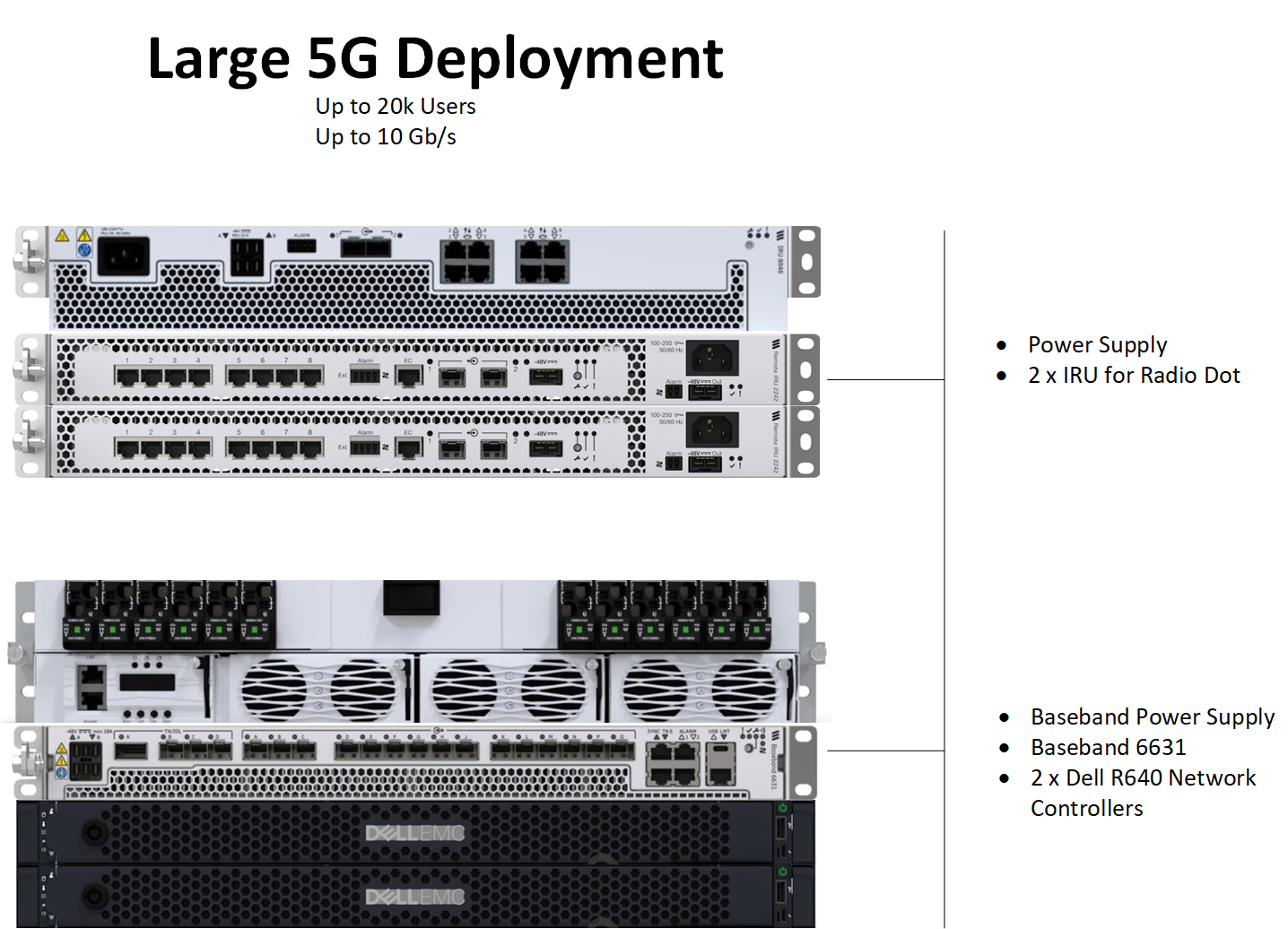When dealing with transportation use cases it is nearly always necessary to have a video offload capability from mobile vehicles (bus, train, boat, and so forth). This introduces the need to have a mobile network as part of the solution. In our case we leverage a private 5G network to communicate with mobile vehicles.
In addition to the video offload the Network also needs to support the safe transmission of data back to our data center for historic analysis and evidence purposes.
Private 5G Network
In order to facilitate wireless transfer of video from a bus to a depot we used a private 5G solution. This was selected because private 5G uses coordinated spectrum allocation to protect communications from interference. In addition 5G is capable of broadcasting at a longer range than Wifi so fewer access points would be needed to cover the entire depot.
In our lab we leveraged an Ericsson private 5G stack to conduct our testing. Ericsson has partnered with Dell to provide a robust enterprise grade 5G offering. We used the "Large" offering that can handle up to 10 Gb/s throughput. In our environment we used a dedicated spectrum that was limited to 1 Gb/s.

In this deployment the RAN components run on dedicated Ericsson hardware and the Network Controllers run on Dell PowerEdge servers. Indoor Radio Units (IRU) are also used to control the Radio Dots (antennas) deployed around the building. In addition to the server components multiple Ericsson Radio Dots were placed around our facility to provide access points to the private network.
Internal Network
It is important to consider the internal network in the overall system design. A goal is to ensure that all video data gets from mobile buses to the data center without data loss.
The following items must be considered when designing the internal networks in the bus depot:
- It is necessary to ensure that the 5G network can access the XR4000 network in the depot.
- Specifically the NFS port 2049 (5G -> XR4000) should be open since the offload process uses NFS.
- The XR4000 Virtualized cluster requires the following networks:
- vSphere Management: Used byESXi for host management.
- vMotion: Used by ESXi for vMotion.
- vSAN: Used by ESXi for vSAN traffic.
- User Used for user access to applications running on the VxRail.
- The XR4000 at the depot also needs connectivity to the data center (over standard wired network).
- Specifically, the NFS port 2049 (XR4000 -> data center) should be open since the synchronization process uses NFS.
